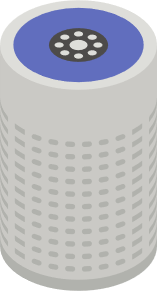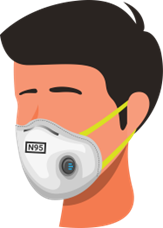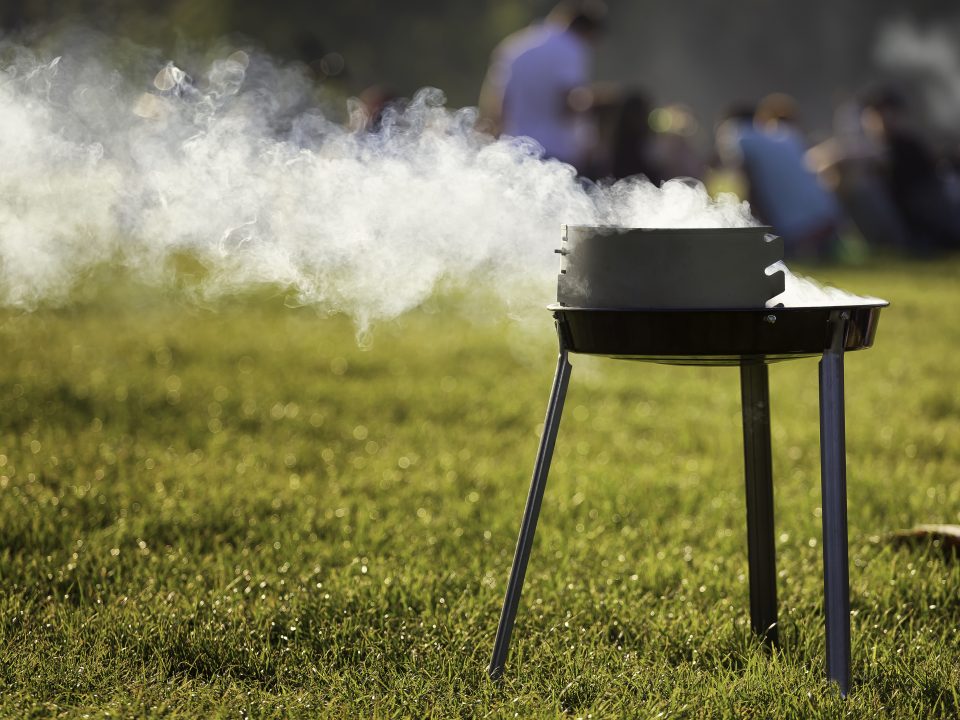
Students Study Air Quality Near a Shipping Port and a Park
May 23, 2023
Empowering Future Environmental Stewards: The Kids Making Sense Pilot Program by the Spokane Regional Clean Air Agency
December 11, 2023
Tips for protecting yourself from breathing in wildfire smoke
These tips are based on advice from the U.S. EPA’s Wildfire Smoke Factsheet and the California Air Resources Board.


Check Local Air Quality Reports
During extreme smoke events, air quality can change rapidly. Pay attention to reputable websites such as your local air quality agency or the AirNow Fire and Smoke Map to understand current air quality levels in your area and future forecasts. These resources will likely refer to the “Air Quality Index.”

The AQI tells you how clean or polluted the air is, and what associated health effects might be a concern. The AQI communicates the health effects that you may experience within a few hours or days after breathing polluted air. The AQI scale runs from 0 to 500. A higher AQI value indicates more air pollution and thus greater health concerns. An AQI value of 100 generally corresponds to the national air quality standard for the pollutant, which is the level that the EPA has set to protect public health. AQI values below 100 are generally thought of as satisfactory. When AQI values are above 100, air quality is considered to be unhealthy for sensitive groups of people, including children, older people, and people with lung disease. As the AQI values increase, air quality is considered unhealthy for everyone. Find more information about the AQI here.
.
.

Limit Time Spent Outside
If it looks or smells smoky outside, avoid strenuous physical activity such as running, walking, or yard work. Smoke can irritate the eyes, lungs, nose, and throat, and lead to worsening of chronic heart and lung diseases.
.
.

Use a Portable Air Cleaner
Use a certified portable air cleaner to reduce indoor particle levels. This can be helpful if you do not have an HVAC or central air system, or if you want to add supplemental filtration to clean your air further. Be sure that the chosen air cleaner does not create ozone or other air pollutants. CARB has a list of approved air cleaners that you may wish to review before selecting a filter. If commercial air filters are unavailable or unattainable, consider building a box fan filter. There are many resources online to help with this, including from the U.S. EPA, the Washington Dept. of Ecology, and the Colville Tribes Air Quality Program.

Create a Cleaner Air Room
Select an indoor space with minimal windows and doors and no fireplace or other vents (such as kitchen hood vents) where outdoor air could creep inside. In this space, set up a portable air cleaner that is of a suitable size for the room, and fan(s) or air conditioning. Be sure to keep the windows closed in this space to minimize smoke infiltration. If you have an air sensor, consider setting it up to ensure that pollution levels remain low in the clean room space. If you cannot set up a cleaner air room at home, check with your local air quality agency or city to see if they have established clean air spaces at nearby government buildings, libraries, or schools in your community for public use.

Do Not Add to Indoor Air Pollution
Avoid activities that contribute to indoor air pollution, such as burning candles or incense, smoking, using wood burning, gas, or propane stoves, frying food, or vacuuming, unless the vacuum is equipped with a HEPA filter.

Use N95 Masks
Cloth masks, bandanas, and dust masks will not provide adequate protection during a smoke event. Be sure to use a well-fitting N95 or KN95 mask while outdoors, or for additional protection indoors. For more information, see the U.S. EPA Factsheet, Protect your lungs from wildfire smoke or ash.
Additional Resources
Here are more resources to check out from reputable sources regarding ways to protect yourself from smoke and find out more about smoke conditions:
EPA Wildfire Smoke Factsheet (U.S. EPA)
Wildfires and Indoor Air Quality (U.S. EPA)
Protect Your Lungs from Wildfire Smoke or Ash (U.S. EPA)
Protecting Yourself from Wildfire Smoke (California Air Resources Board)
List of CARB-Certified Air Cleaning Devices (California Air Resources Board)
DIY Air Cleaner to Reduce Wildfire Smoke Indoors (U.S. EPA)
DIY Ecology: Breathe Better by Easily Making a Clean Air Fan (Washington Dept. of Ecology)
Box Fan Filter A DIY Users Guide (Colville Tribes Air Quality Program)





